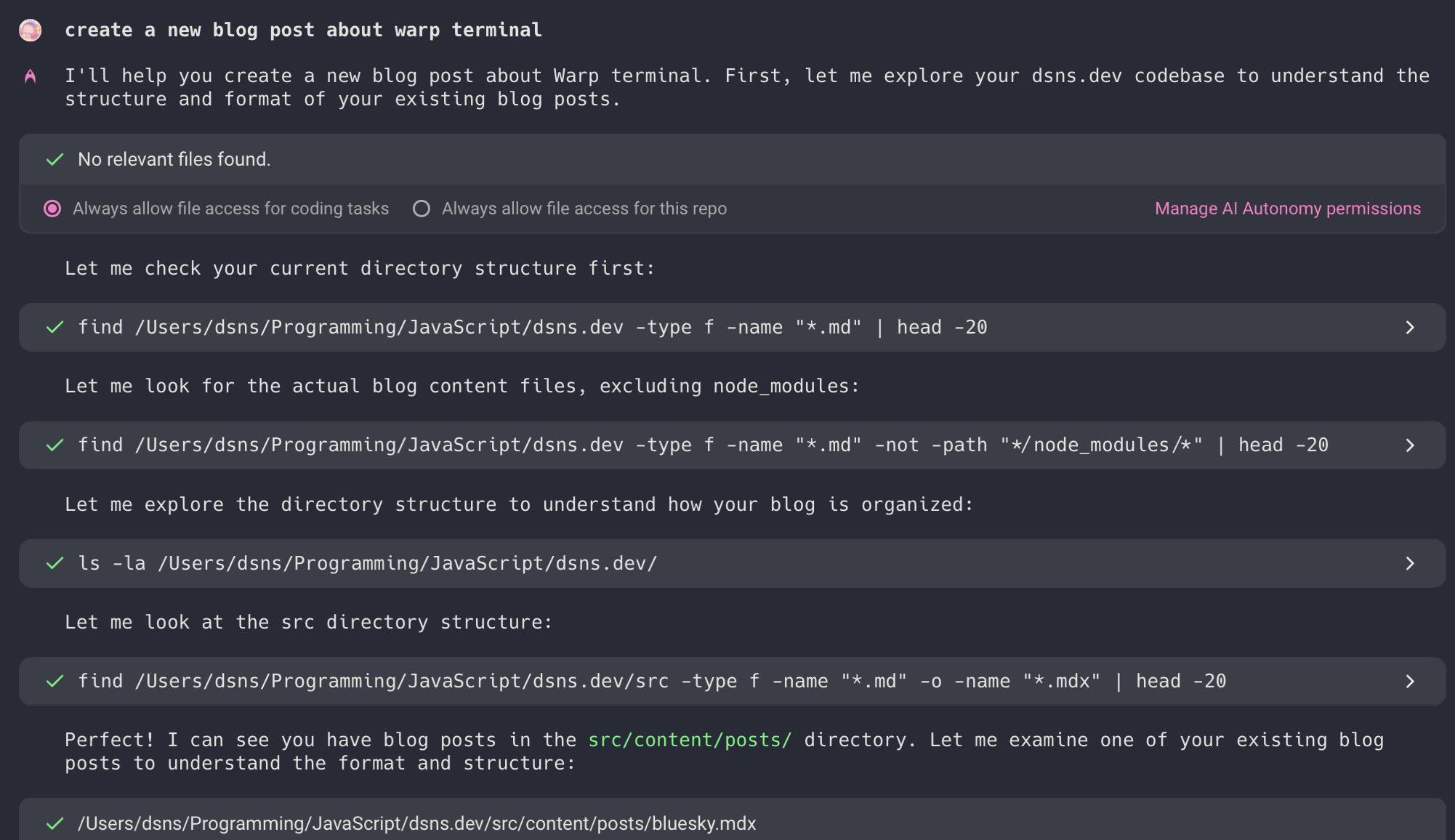Introduction
Big Data, Machine Learning, Blockchain, Artificial Intelligence, Digital Manufacturing, Big Data Analysis.
This is a reference to Indian prime minister Modi talking about technology at a conference, with this becoming a viral TikTok sound. Besides the sheer comedy effect, these are just a couple of overused buzzwords that Big Tech companies love using in 2025.
Are these AI tools actually useful for developers or are they just hype? I decided to ask Warp to create a blog post about itself, and the results are below (excluding some redundant bits).

What Makes Warp Different?
The terminal has been a cornerstone of software development for decades, but it’s largely remained unchanged since its inception. While we’ve seen revolutionary improvements in code editors, browsers, and other development tools, the terminal has stubbornly clung to its 1970s roots. That is, until now.
Enter Warp - the intelligent terminal that’s reimagining what a command line interface can be. Built with Rust for performance and designed with modern developers in mind, Warp isn’t just another terminal emulator. It’s a complete rethinking of how we interact with our computers through the command line.
AI-Powered Intelligence
The most striking feature of Warp is its Warp AI integration. Imagine being able to describe what you want to do in natural language and having the terminal suggest the exact commands you need. Whether you’re trying to find large files, set up a development environment, or debug a complex Git issue, Warp AI can translate your intent into precise terminal commands.
For example, instead of googling “how to find files larger than 100MB in Linux,” you can simply ask Warp AI, and it will suggest:
find . -type f -size +100M
This isn’t just convenient - it’s transformative for both beginners learning the command line and experienced developers working with unfamiliar tools.
The Future of Terminal Computing
Warp represents more than just a better terminal - it’s a vision of how command-line interfaces should evolve. By combining AI, modern UX principles, and collaborative features, Warp is setting the standard for what terminals can be.
As we move toward increasingly complex development environments with cloud computing, microservices, and DevOps practices, having an intelligent terminal that can help navigate this complexity becomes not just nice-to-have, but essential.
Conclusion
The command line doesn’t have to be intimidating, arcane, or isolated. With Warp, we’re seeing the emergence of a new paradigm - one where AI assists our commands, interfaces are intuitive, and terminal knowledge is shared rather than hoarded.
As developers, we spend countless hours in the terminal. Isn’t it time we had a terminal that works as hard for us as we do for our projects? Warp isn’t just a tool - it’s a productivity multiplier that makes the command line accessible, collaborative, and genuinely enjoyable to use.
The future of the terminal is here, and it’s more intelligent than ever.